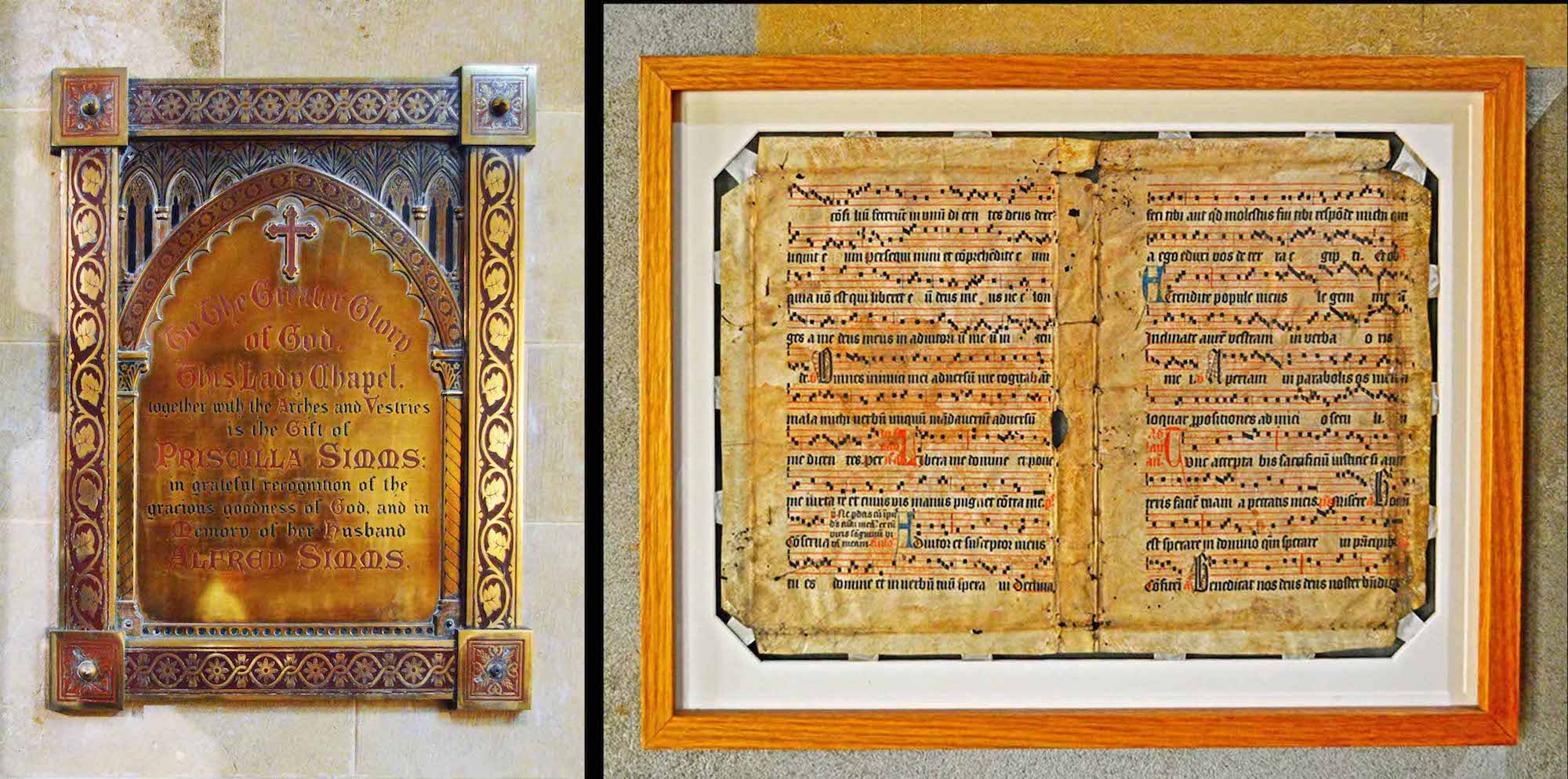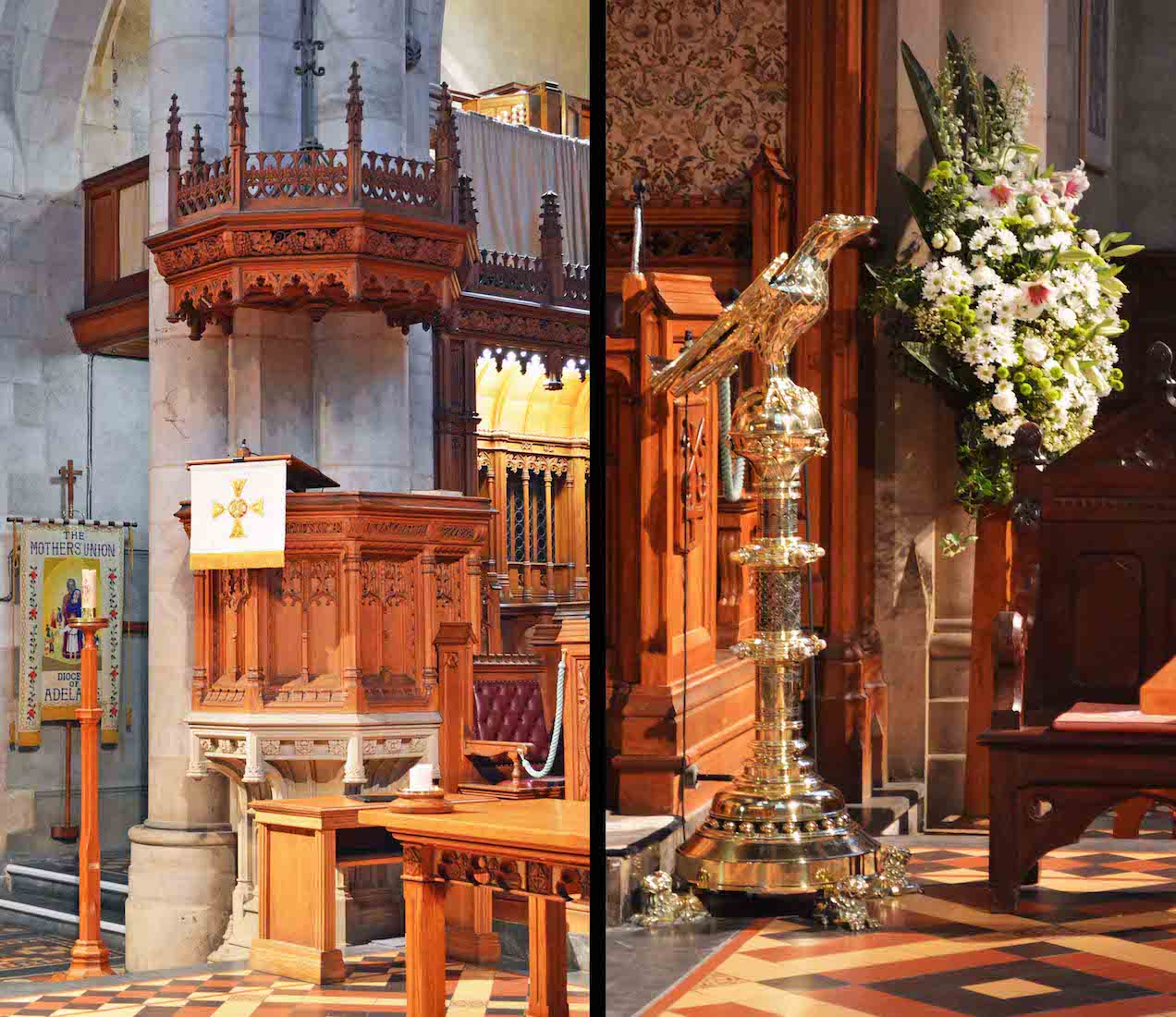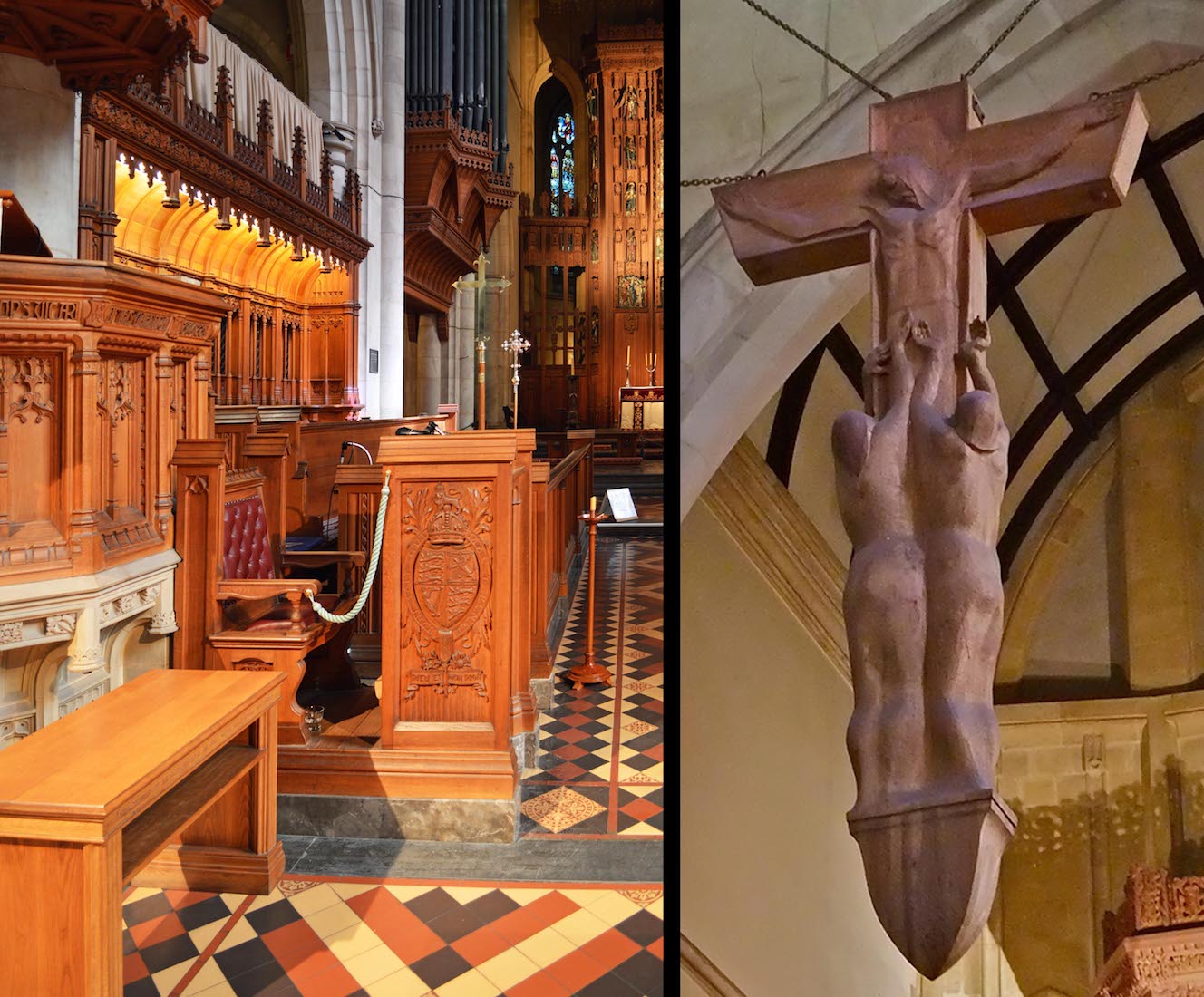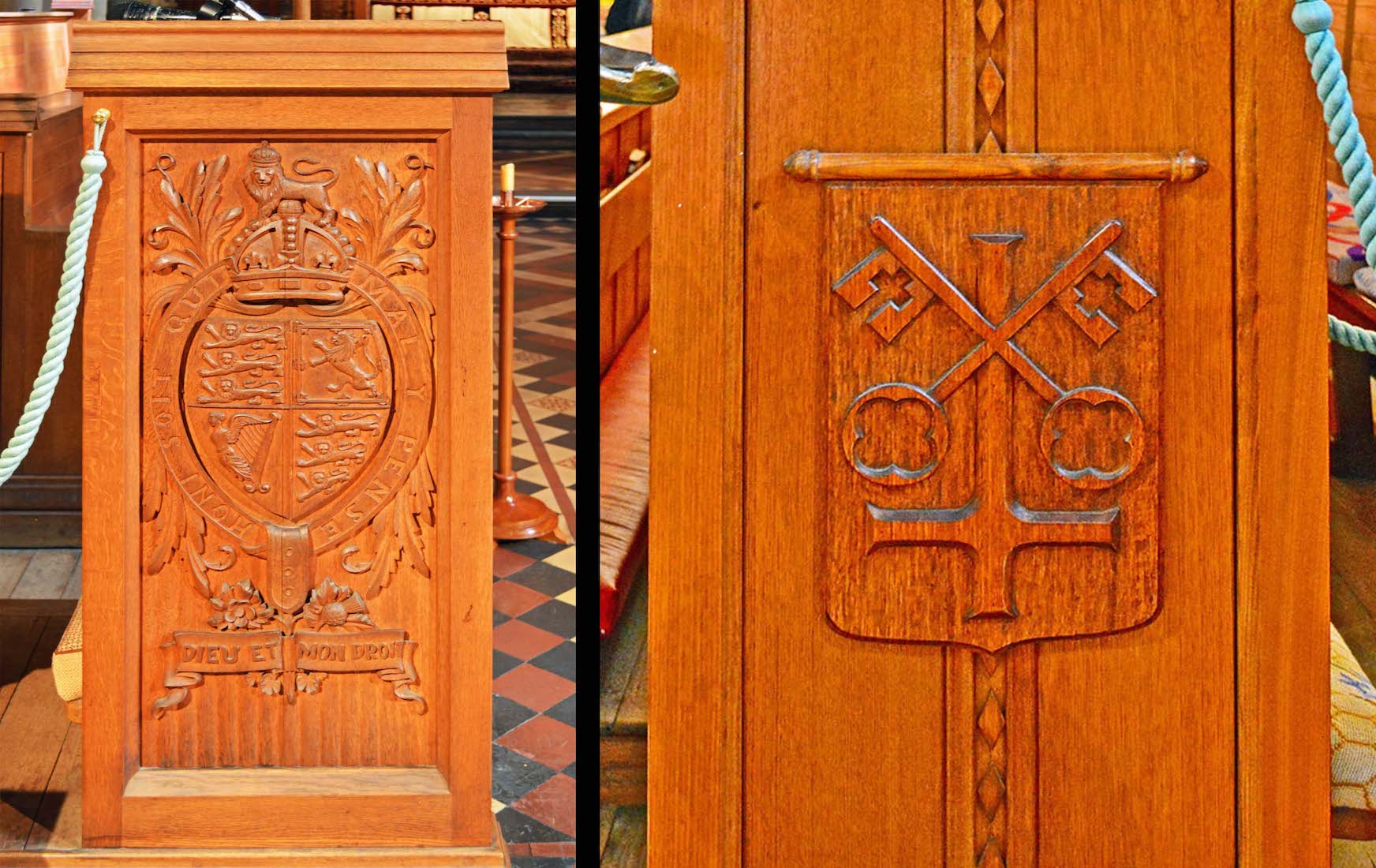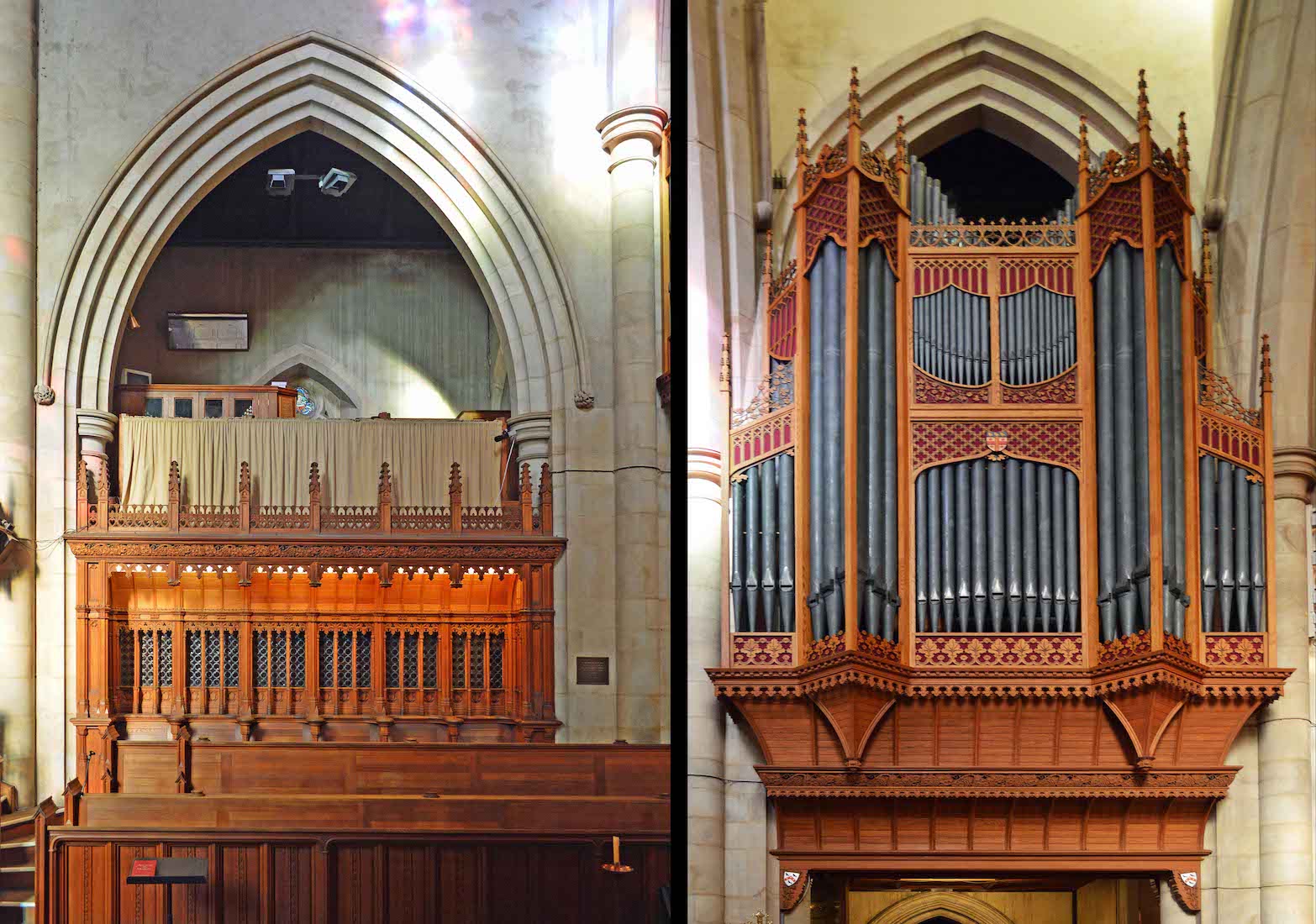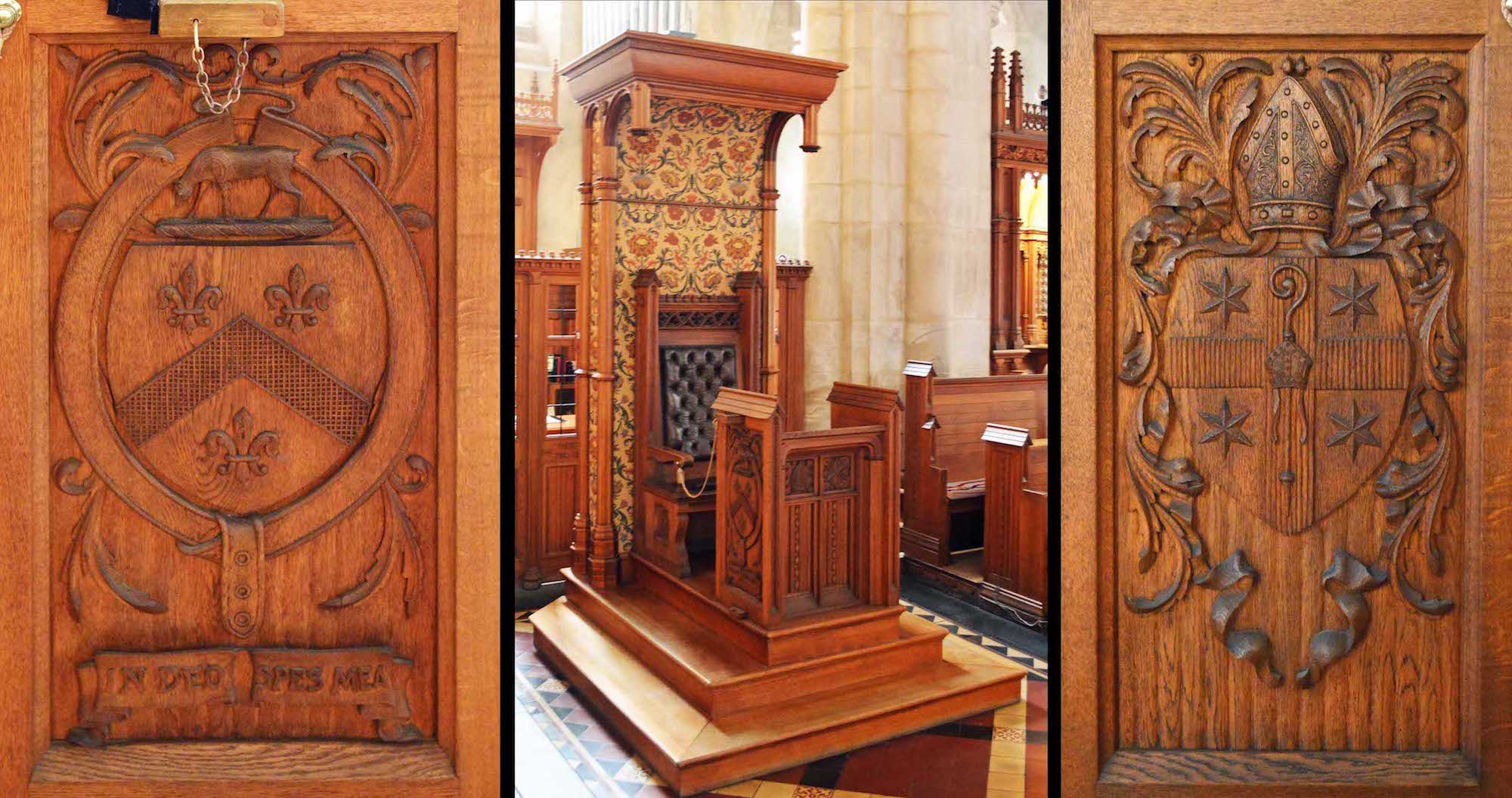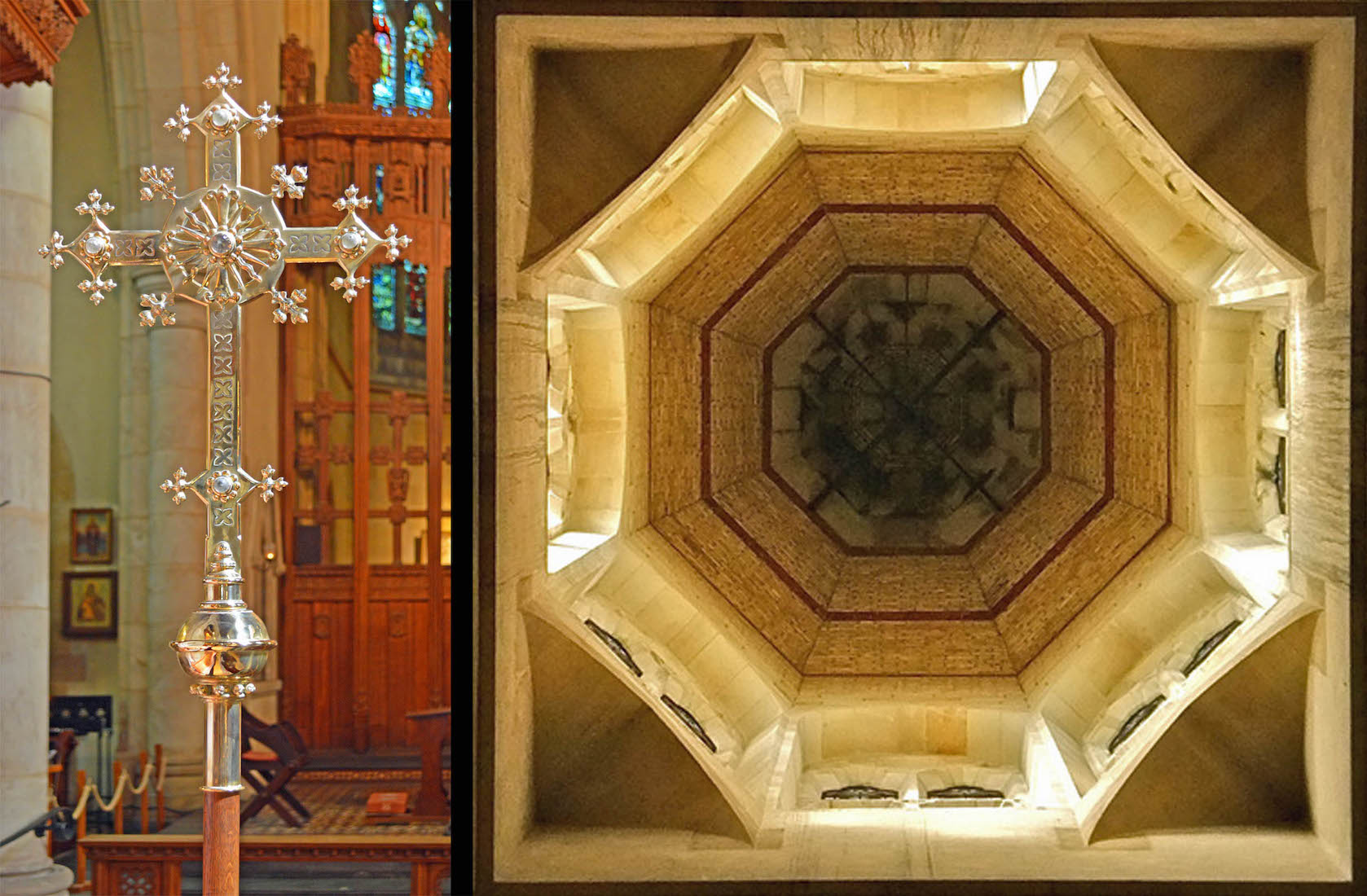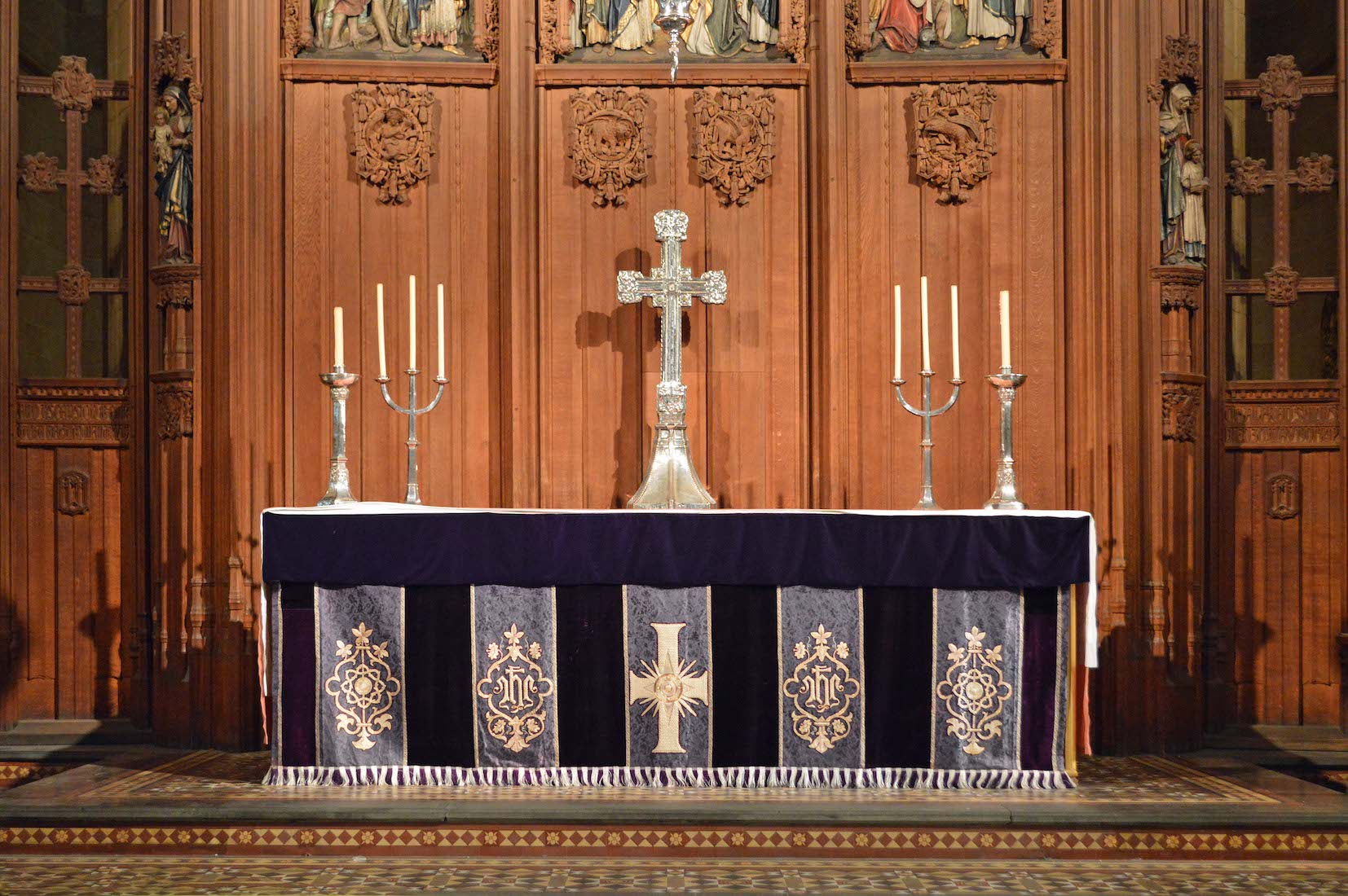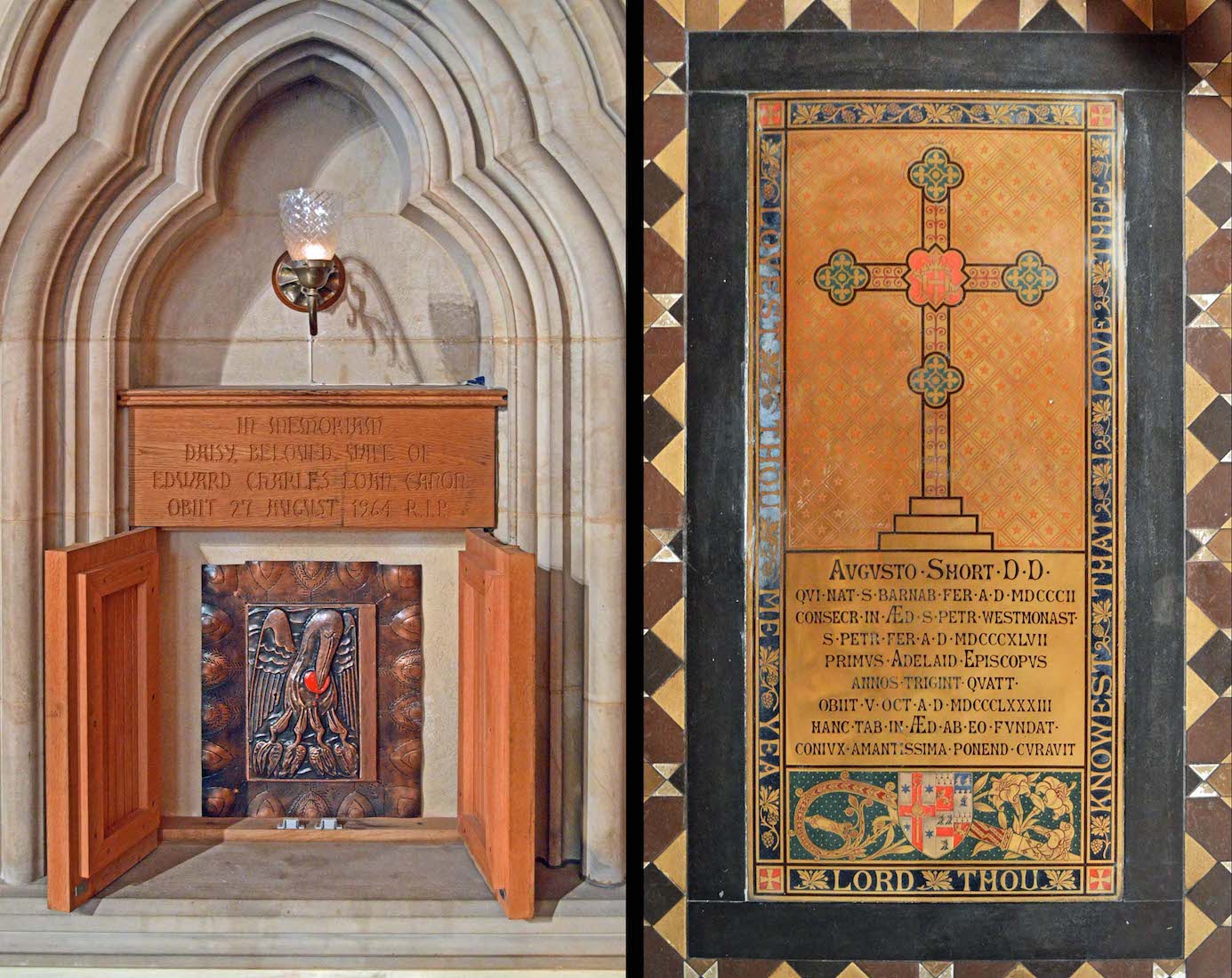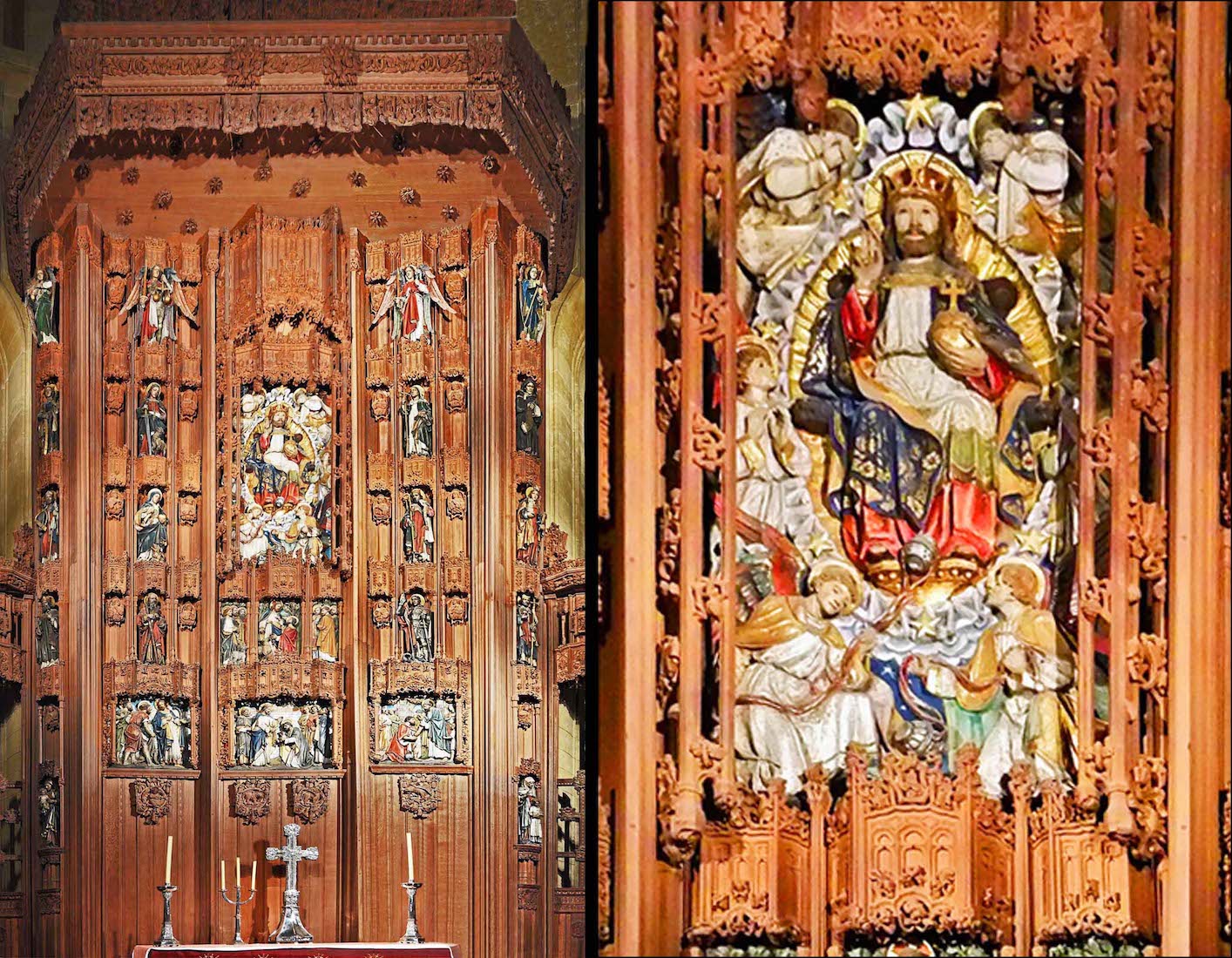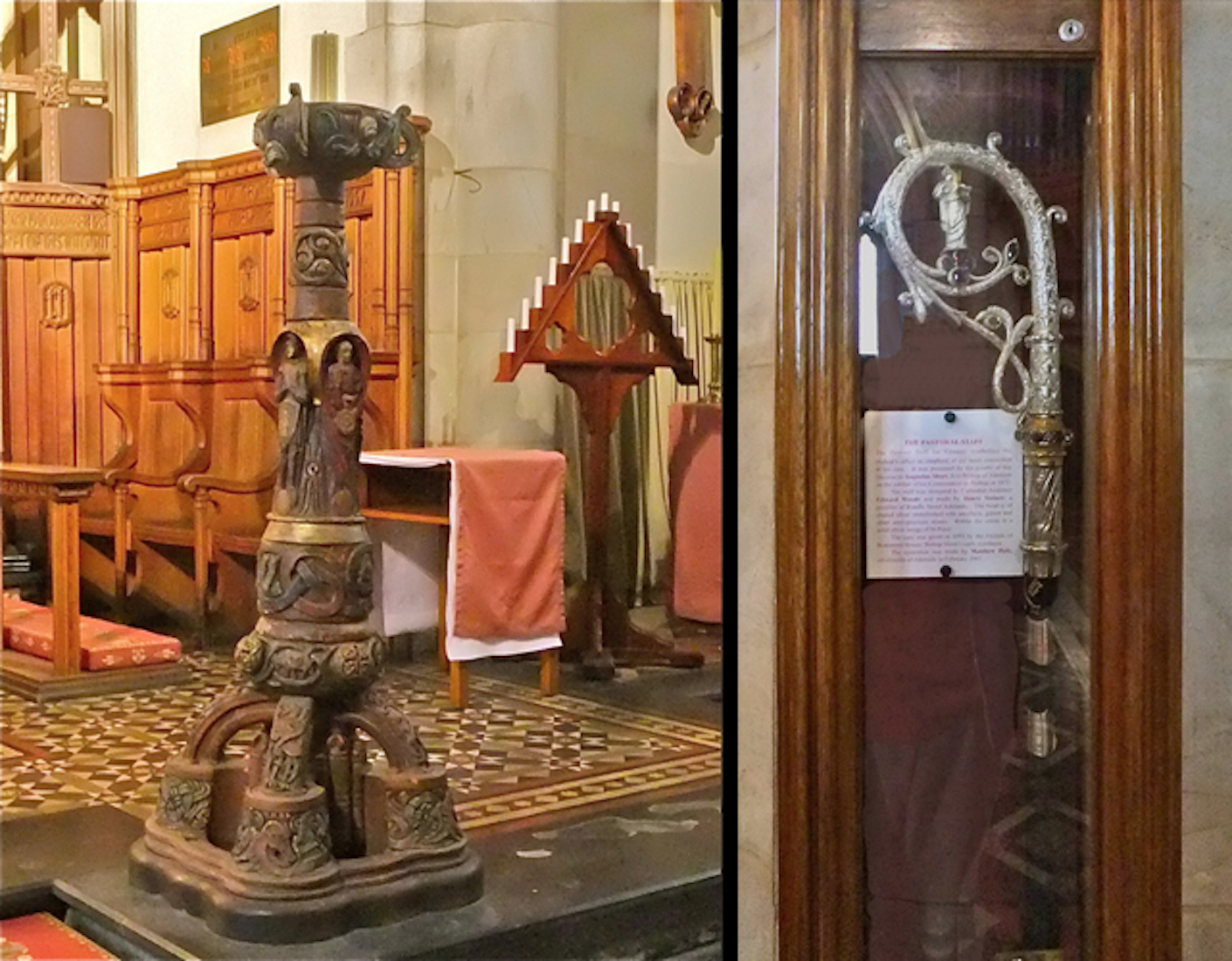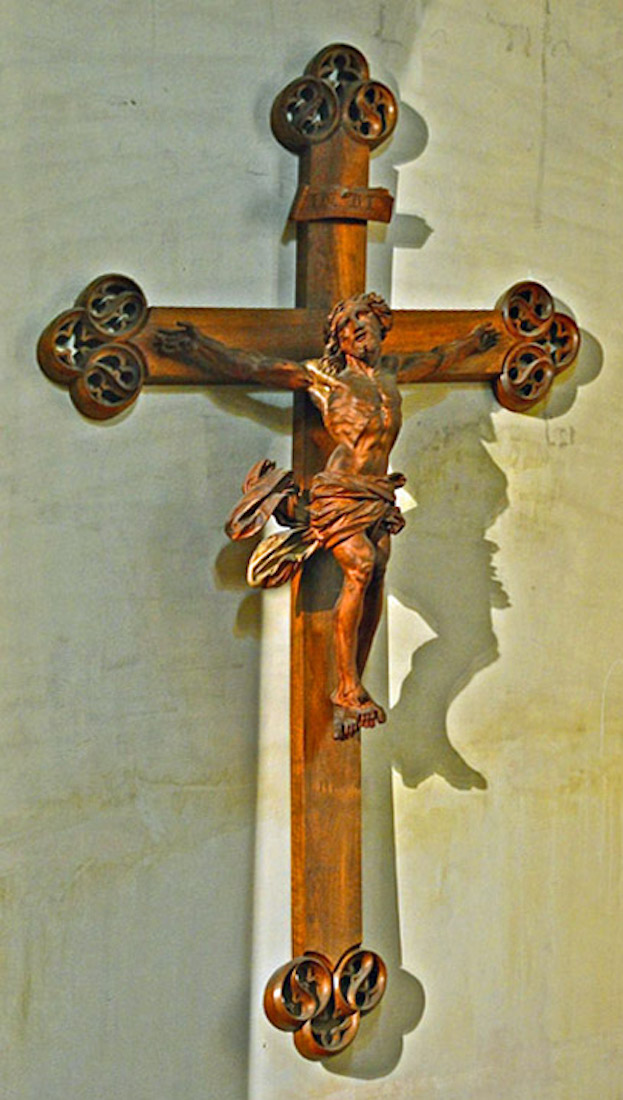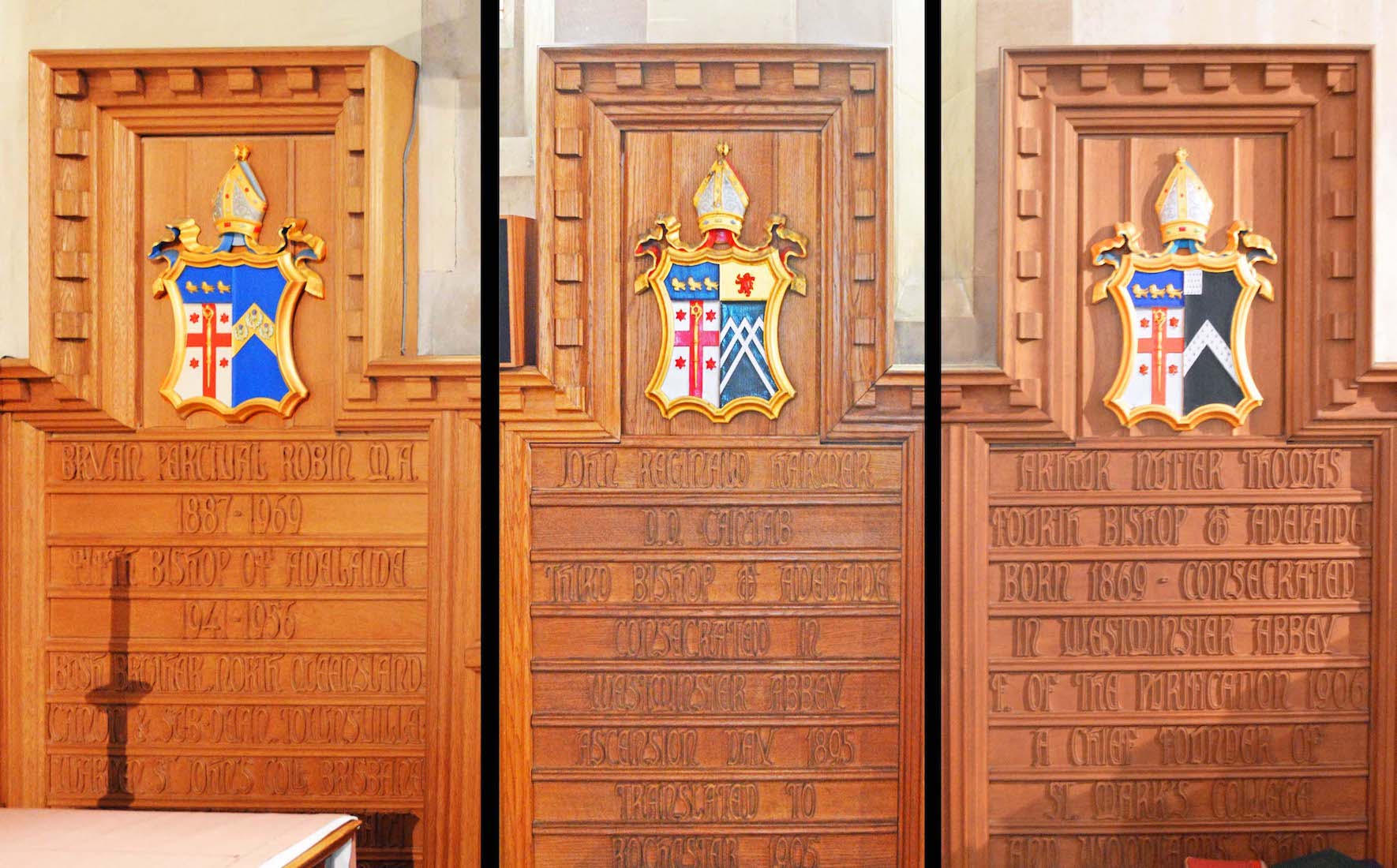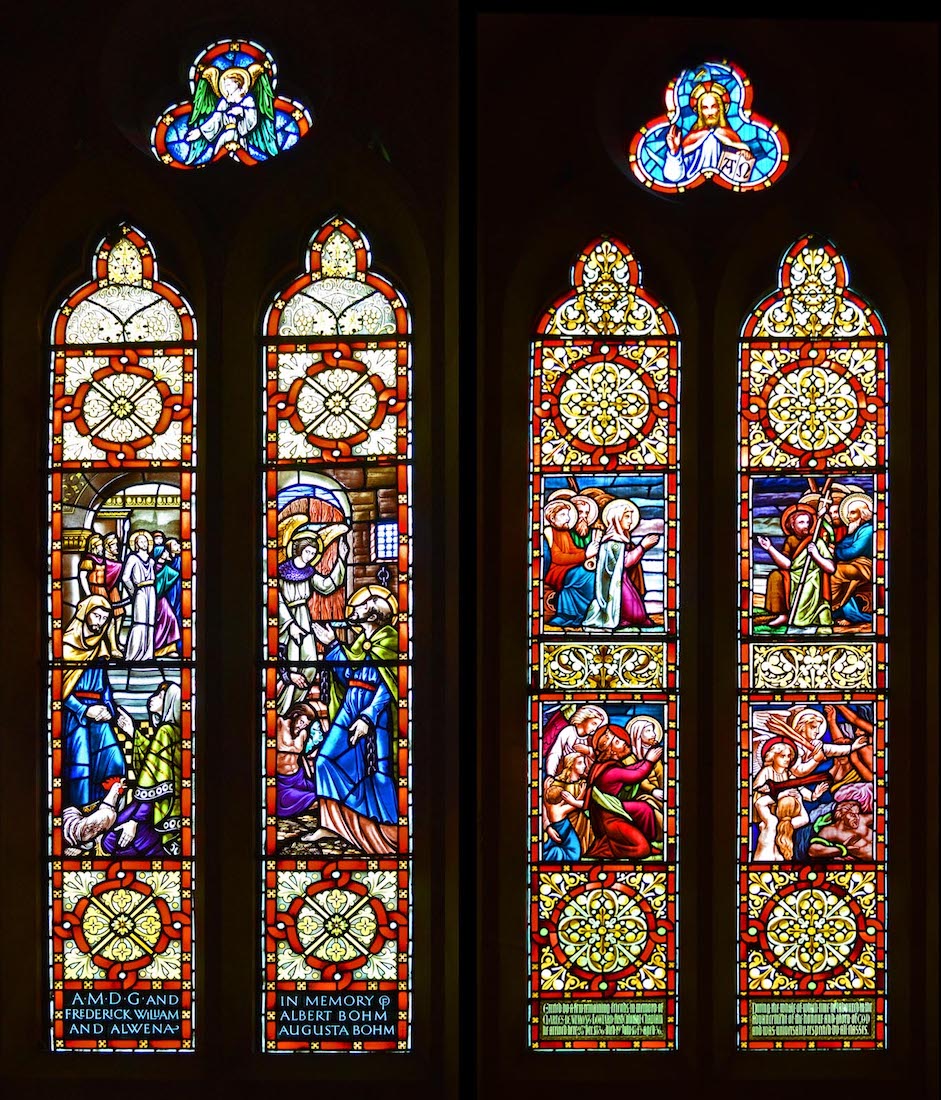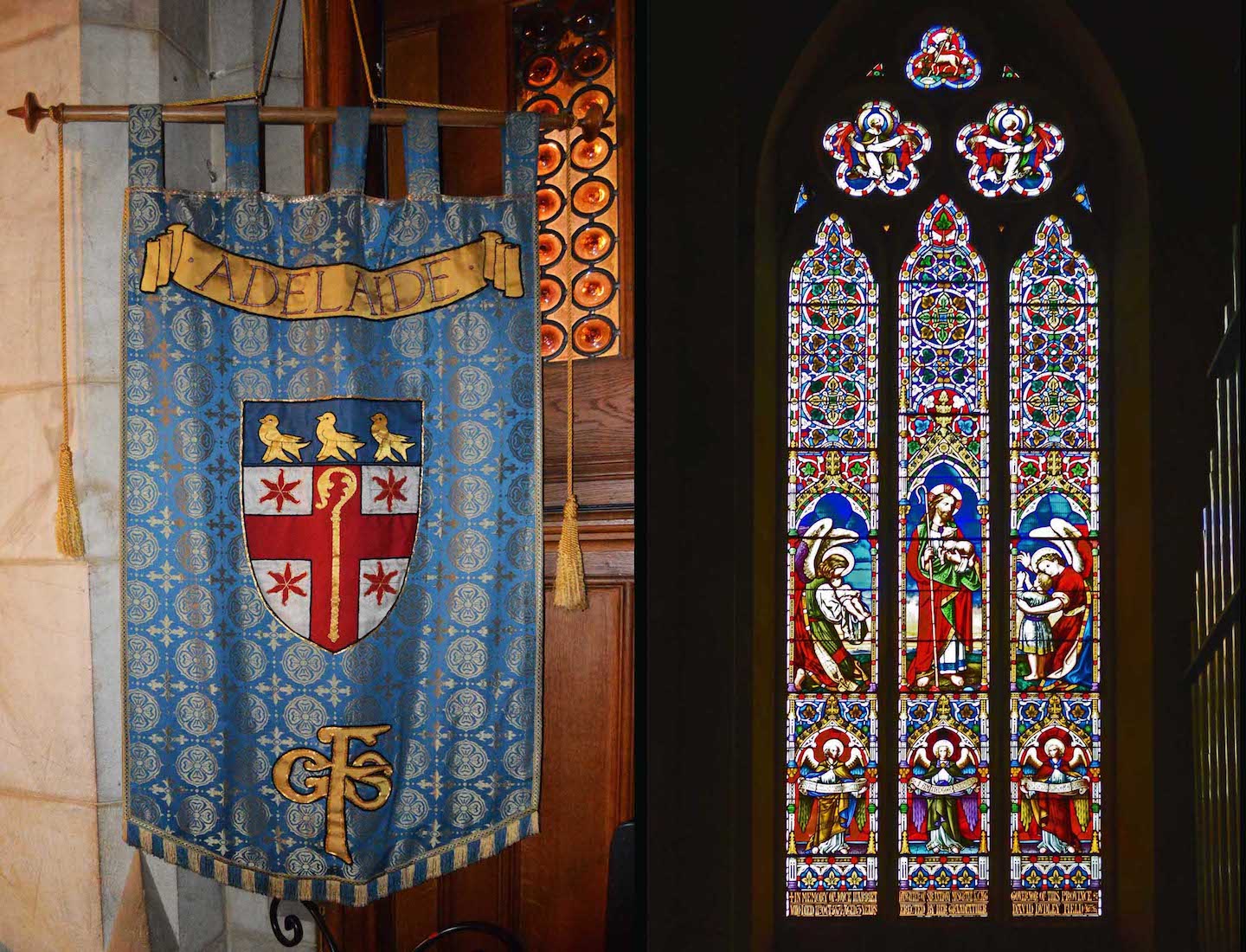41. LADY CHAPEL PAINTING AND SCULPTURE
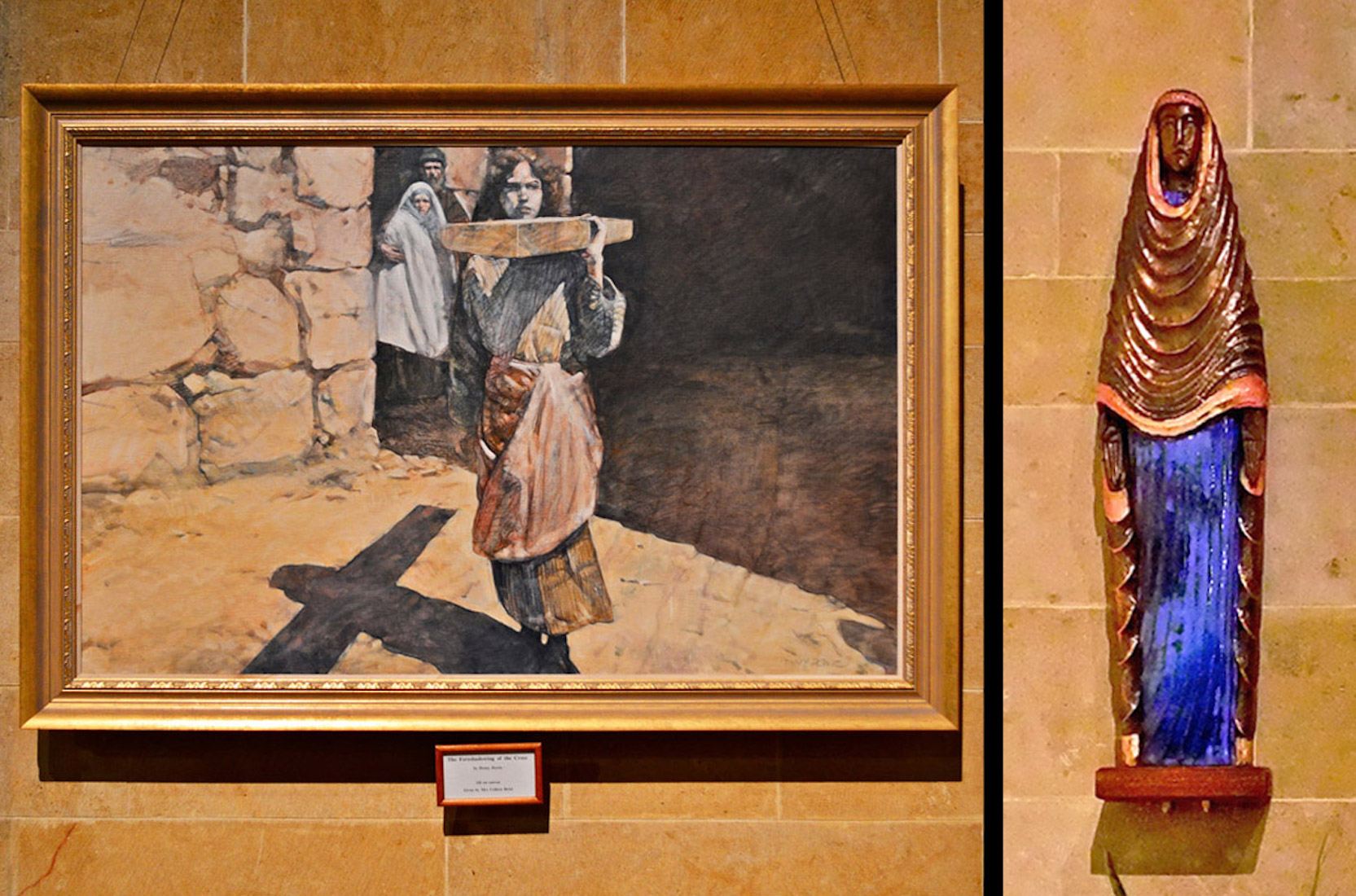
The interesting painting at left shows the young Jesus carrying a beam on his shoulder. On the ground, the stark shadow of the Cross prefigures the Crucifixion. This statue of the Virgin Mary is made of enamelled and oxidized copper, and was made by Czech-Australian sculptor Voitre Marek. It was installed in 1977 to mark the visit of Queen Elizabeth II. PLAN
42. LADY CHAPEL WINDOWS

The beautiful Lady Chapel windows were given by Robert Barr Smith, a Presbyterian who was a major benefactor of this Cathedral. They were made by James Powell and Sons of Whitefriars, London, to a Morris & Co. design, and unveiled in 1904. The craftsmanship is described as being of ‘an exceedingly high standard’.
43. PLAQUE AND MUSIC
Just outside the entrance to the Lady Chapel are displayed pages from a mediaeval book of antiphons, hand copied on vellum. Antiphons are verses sung before and after the Psalms in the service making up the daily office. The manuscript came into the possession of E. Ingleby of Glenelg, who presented it to the Cathedral in 1937. The donor understood that these pages had been used in the binding of a copy of the 1631 edition of Emanuel Sweert’s Florilegium Ampfissimum, an opulent and beautifully presented specimen and advertising catalogue in the flourishing European flower trade of the early 17th Century. • Alfred Simms was a businessman and a member of the Adelaide Stock Exchange.
45. PULPIT AND LECTERN
The pulpit is a memorial to Dr Arthur Dendy who was Precentor and Bishop’s Vicar from 1878 to 1890. It was designed by Walter Bagot. The beautiful English oak canopy above the pulpit and the carved woodwork in the Chancel were given by Sir Langdon Bonython in memory of his wife who had died in 1924. • The lectern was given in 1876 by English friends of Bishop Short to commemorate the Jubilee of his Ordination, and bears an inscription in Latin. It is in the traditional shape of an eagle and made of brass. The Scriptures are read from here during services.
46. PRECENTOR’S STALL AND ROOD
Next to the pulpit is the Precentor’s stall bearing the Royal Cipher on the Nave side and South Australia’s Piping Shrike on the Sanctuary side. The photo of the rood cross is an historic insertion, unfortunately no longer in place. It is a depiction of Jesus on the Cross, with Mary his Mother and John the Beloved Disciple at the foot. Made of Queensland maple by Hungarian-Australian sculptor Andor Meszaros, the rood was installed in 1955. It was given by Mrs Andrew Tennant Mortlock in memory of her husband, who had been a Cathedral Warden and a generous benefactor. It was taken down in 2017 as its weight was causing structural damage to the supporting arch.
47. CHANCEL WOODWORK
At left is a closer view of the Royal Cipher, and at right on the Dean’s Stall, the Arms of St Peter. These feature the Keys of the Kingdom given by Jesus to Peter (Matthew 16:19), and an inverted cross. It is believed that Peter was crucified up-side-down. Now walk up through the centre of the chancel towards the high altar.
48. ORGAN
The choir stalls were locally carved by Turner and Nottage in 1926 and made of English oak. Above them is the four manual organ console. The first organ for the Cathedral was built in 1876 by Bishop and Son and contained 29 stops over three manuals and pedals. The present four manual instrument was newly built in 1929 by Hill, Norman and Beard. In 2017 the organ was shipped back to England to the workshop of Harrison & Harrison Ltd of Durham, and comprehensively overhauled.
49. CATHEDRA
Beyond the South choir stalls stands the Bishop’s Throne, or Cathedra. The word comes from the Greek word for ‘throne’, and in fact St Peter’s is a cathedral because the Bishop’s Throne is here. The throne desk has carvings on either side.
50. CROSS AND LANTERN
At left is the beautiful processional cross. Look up to see the pleasing octagonal symmetry of the lantern tower. It may be best appreciated by lying on one’s back on the floor in an undignified way directly beneath it! Butterfield’s tower is 42.67 metres (140 feet) high.
51. HIGH ALTAR
The high altar was designed by Walter Bagot and installed in 1937. The top contains a square of marble from the Holy Island of Iona in Scotland.
52. AUMBRY AND FLOOR PLAQUE
The aumbry is on the North side of the Sanctuary. The inner door has been enhanced with a traditional symbol of a pelican with her young. According to ancient legend, the pelican is an emblem of self-sacrifice, saving its young by stabbing its breast with its beak and sprinkling them with its own blood. Nearby is the burial plaque of Bishop Augustus Short: the Bishop is actually buried in England. These are ‘out of bounds’ to the general public.
53. REREDOS
The reredos was designed by English architect T. H. Lyon and built of English oak at St Sidwell’s Art Works, Exeter, England. It was dedicated in 1910. The central panel depicts Christ in majesty.
54. CANDLESTICK AND STAFF
The two pavement candlesticks are made of terracotta. They were made by Mary Watts, wife of the English artist G. F. Watts, and were used at his funeral in 1904. Near the cathedra is the pastoral staff (Bishop’s staff), designed by E. J. Woods and made by Henry Steiner of Rundle Street. The head is of chased silver set with semi-precious stones and the crook contains a solid silver image of St Peter. The staff symbolizes a Bishop’s role as shepherd of the souls committed to his care.
56. DEAN’S CHAPEL: CRUCIFIX
On the East wall of the Cathedral hangs a large Crucifix made of walnut and lime. This was given to the Cathedral by the then Governor, The Earl of Kintore. It was originally part of the First World War Memorial that had been in this position, and also hung by the Pope Window.
57. WALL PANELLING
Three more bishops are commemorated here: Fifth Bishop Bryan Percival Robin (1887 – 1969), Third Bishop John Richard Harmer (1857 – 1944), and Fourth Bishop Arthur Nutter Thomas (1869 – 1954).
58. DEAN’S CHAPEL WINDOWS
These windows depict St Peter’s Betrayal of Christ and His Deliverance from Prison, and at right, The Last Judgement. The left window is a memorial to Charles Beaumont Howard, the first Colonial Chaplain. He died at the age of 36 in 1843, and friends erected the window some 50 years later. The right window was erected in memory of Frederick William Albert and Alwena Augusta Bohm in 1966. It was made by J. Wippell and Co. Ltd. of Great Britain.
59. GOOD SHEPHERD WINDOW
We leave the Dean’s Chapel and come to the Good Shepherd Window in the South Wall. This was made by William Wailes in the late 1870s, and given by Dudley Field in memory of his grand-daughter Joyce Harriet Musgrave. She was the three-year-old daughter of Sir Anthony Musgrave, Governor of South Australia. The Girls’ Friendly Society banner is an historic reminder of past times.
60. SACRISTY TRIPTYCH
Hidden away from general public view in the Sacristy is this wonderful triptych. It bears the inscription: ‘1880 Marion DGRR Finniss 1944 The Gift of the Friends of the Cathedral’. Adam and Eve appear on the top outer panels. The triptych can be seen at a distance from behind the cathedra. We now return past the nave altar to the open area of the South transept. The South Choir Aisle leads off this.


